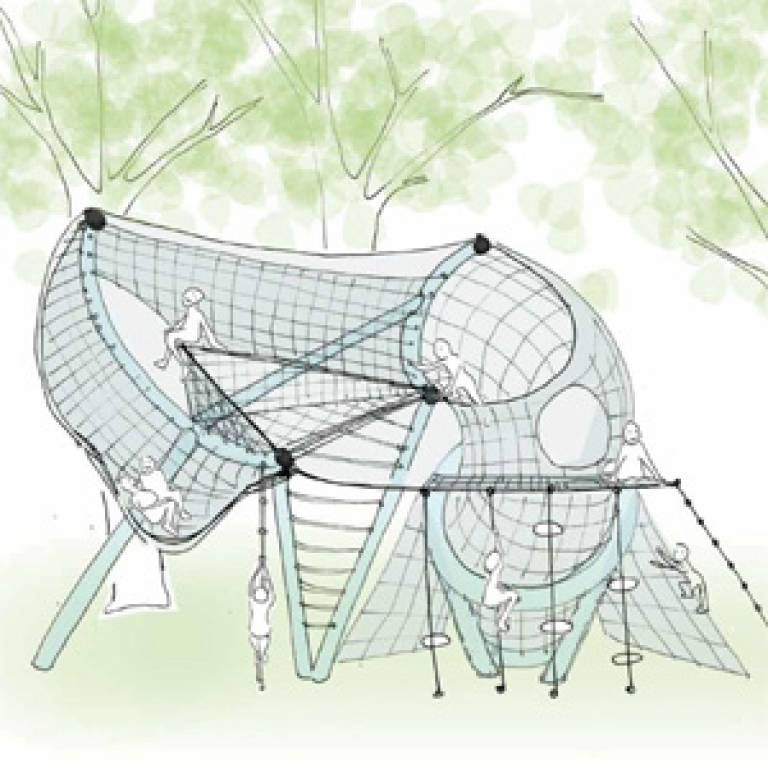Working with Camden Council to get children active
3 July 2014
An initiative to see if playground design can inspire schoolchildren to be more active, Camden Active Spaces, is launched today at the Institute of Sport Exercise and Health (ISEH) in partnership with UCL and Camden Council.

As part of the innovative project, designers have worked with children in seven schools across Camden to design unique structures for their playgrounds. These will be built over the summer holidays ready for the new school year, and the hope is that they will inspire children and their families to be more active and healthy.
The new structures should help schools, voluntary clubs and volunteers to provide more extensive and exciting activities with the aim of increasing participation among children and communities. The project is designed to bring benefits to children of all ages and their families.
To find out whether the initiative successfully increases children's physical activity, Dr Mark Hamer (UCL Epidemiology & Public Health) is leading an evaluation of the project, funded by the Economic and Social Research Council.
"We will be carefully monitoring physical activity and fitness among children to see if the new playgrounds make a difference," explains Dr Hamer. "We will take measurements from 60-70 children in each of the seven participating schools, plus a control group from a school not involved in the project. In total, we expect to get data from about 500 children. This should give us strong evidence on the overall success of Camden Active Spaces - if it is successful, we will have the data to support a wider roll-out of the scheme."
Nothing like this has ever been done before, so it's a really exciting project to be involved with. We hope that by involving children in the design process, they will actually want to use the equipment and be more active overall.
Dr Mark Hamer
The team are currently taking baseline measures to see how fit and active the children are before the project begins. Follow-up measurements will be done in the autumn term and again in a year's time. This will reveal whether any positive effects of the new playgrounds remain steady over time or decline as the novelty wears off.
Participating children will wear small devices around their waists to measure physical activity. These sophisticated devices detect movement in three dimensions, so can provide detailed measures of physical activity. Children will be asked to wear them all day for a week, only taking them off to sleep.
"By measuring in three dimensions, the devices can tell us a lot more than traditional pedometers," says Dr Hamer. "We get the full spectrum of physical activity, from when they are intensely active to when they're sitting down. We will measure activity throughout the day, not just at school, to see the bigger picture.
"Being more active at school may encourage children to be more active overall. However, there is a chance that they will burn out their energy at school and be less active at home. We need to know either way, so it is important to monitor activity levels outside of school as well."
If the scheme proves successful at increasing overall activity levels among children, then the concept could have a big impact on public health policy.
"Nothing like this has ever been done before, so it's a really exciting project to be involved with," says Dr Hamer. "Similar studies in France and Australia have seen small effects by changing markings on playgrounds, but this is far more ambitious. We hope that by involving children in the design process, they will actually want to use the equipment and be more active overall."
Links
Images
- Playground design for Torriano Infants and Junior School (courtesy of Camden Active Spaces)
 Close
Close

